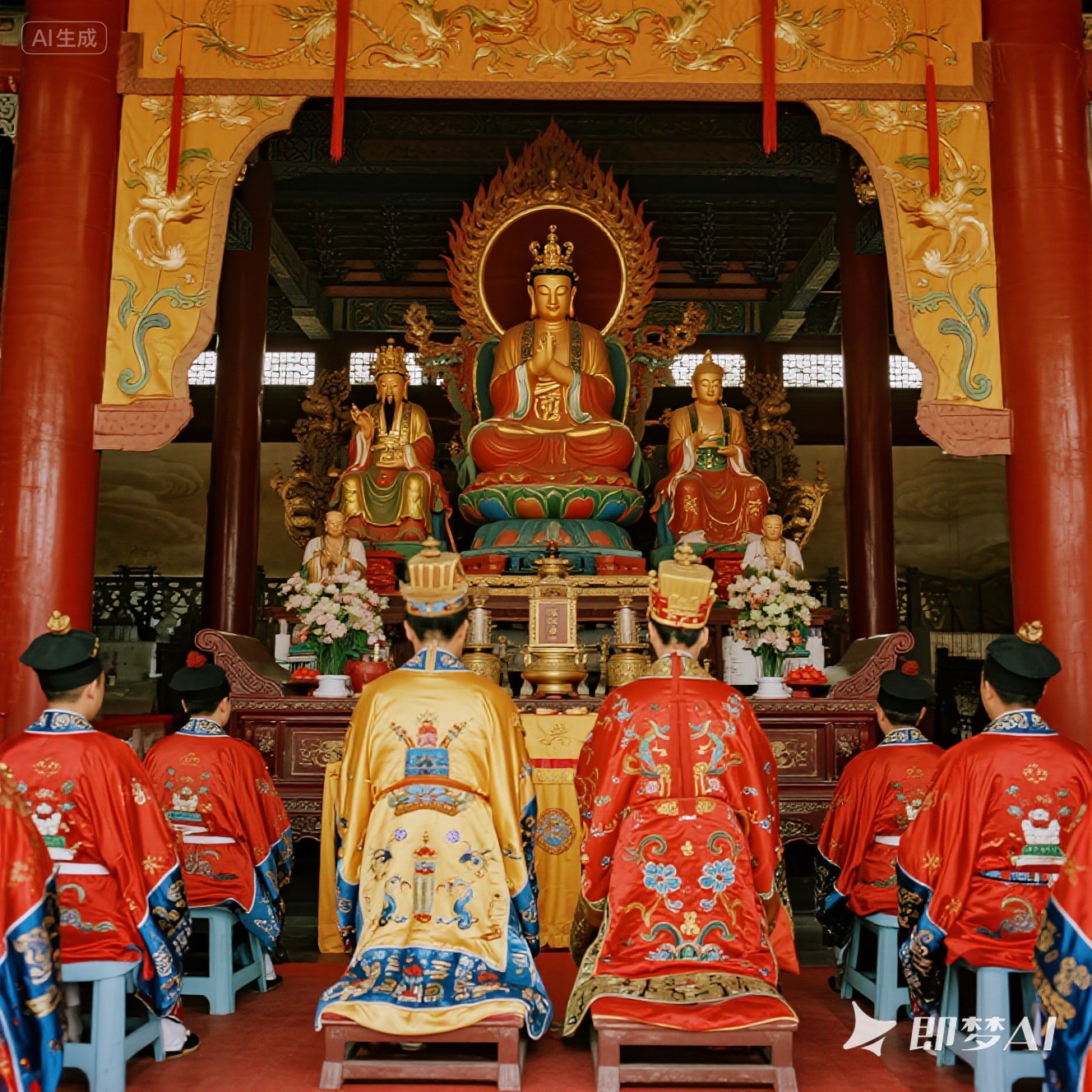The Role and Rituals of Consecration in Formal Taoist Altars

Consecration (known as "kaiguang" in Chinese, 开光) at a formal Taoist altar is a profoundly significant religious ritual in Taoism. It aims to infuse divine power into deity statues or ritual tools through specific magical practices and procedures, endowing them with spiritual essence and protective abilities. This ritual not only embodies Taoism’s reverence for deities but also symbolizes the purification and blessing of believers or objects.
I. The Role of the Consecration Ritual
Endowing Spiritual Essence and Protection
The core role of consecration is to grant spiritual essence to deity statues or ritual tools, enabling them to communicate with deities and thus provide blessings to believers. Taoism holds that through consecration, a deity statue can absorb the spiritual energy of heaven and earth, becoming an incarnation of the deity. It is believed to respond to prayers, helping believers ward off evil, dispel misfortune, and resolve difficulties.
Enhancing Fortune and Feng Shui Effects
Consecrated objects are thought to enhance one’s fortune, such as attracting wealth, protecting the body, or bringing noble helpers. For example, a consecrated *pixiu* (貔貅, a mythical creature) is believed to boost wealth; a consecrated gourd can化解病符 (ward off illness-related misfortune); and a consecrated *Bagua* (八卦, the Eight Trigrams) can block negative energy. These effects are not merely psychological comfort but are seen as symbolic manifestations of the spiritual essence bestowed through the ritual.
Purification and Connection with the Divine
The consecration ritual includes purifying the statue or tool—using blessed water, cinnabar, and other items to "dot the eyes" (点睛) and "awaken spiritual awareness" (通灵开窍). These steps clear impure energies, strengthening the object’s connection to the divine.
Psychological Solace and Spiritual Elevation
For believers, consecration is not just a religious act but a form of spiritual solace. Participating in the ritual helps them find inner peace and strength, aligning with the Taoist ideal of "supreme virtue being like water" (上善若水), which emphasizes humility and harmony.
II. Steps of the Consecration Ritual
Preparation Phase
Selecting an auspicious day: The ritual is typically held on an auspicious day and time to ensure its smoothness and sacredness.
Purification and altar setup: Taoist priests first purify themselves, then arrange offerings (incense, candles, water, etc.) on the altar to show piety.
Preparing tools: Items such as cinnabar, a ritual brush, a towel, and a mirror are prepared, each playing a key role in the ceremony.
Purification and Cleansing
The statue or tool is purified using blessed water, talismans, and other means. Priests recite incantations and perform *gangdou* (罡步, ritual steps mimicking cosmic patterns) to strengthen its connection to the divine, dispelling any impure energies.
Dotting the Eyes and Awakening the Spirit
Divine brush with cinnabar: The priest uses a blessed brush dipped in cinnabar to inscribe incantations in the air above the statue/tool. The "dotting the eyes" (点睛) step is crucial, symbolizing the infusion of life and spiritual awareness.
Awakening the senses: Through gentle touches or strokes on the statue’s facial features and limbs, the ritual "opens" its spiritual channels, deepening its link to the deity.
Infusing Divine Energy and Closing the Altar
By reciting incantations and using a mirror to reflect natural light onto the object, the ritual channels the energy of heaven and earth into it. After the ceremony, the statue is dusted, and any red cloth or thread used during preparation is removed—signaling it has officially become a spiritually charged entity.
Enshrining and Worship
After consecration, the statue is wrapped in red cloth and brought home, or enshrined on an altar on another auspicious day. Believers must keep it clean and free from contamination to maintain its spiritual efficacy.
III. Notes on the Consecration Ritual
Professionalism and Risks
The ritual involves complex steps requiring deep expertise. It must be led by an experienced priest; otherwise, it may fail or even have adverse effects.
Respect and Devotion
The ritual’s success depends on the believer’s piety. Those who lack reverence cannot receive blessings from the Taoist ancestors.
Avoiding Misuse
Many feng shui items on the market claim to be consecrated but lack正统 (orthodox) ritual procedures. Such items may be ineffective or even harmful.
Conclusion
Consecration at a formal Taoist altar is a solemn, sacred religious practice. Through specific rituals and procedures, it endows deity statues and tools with spiritual essence and protective power, embodying Taoism’s reverence for the divine and its role in purifying and blessing believers. For followers, it offers inner peace and strength, guiding them toward the Taoist ideal of harmony and virtue.
